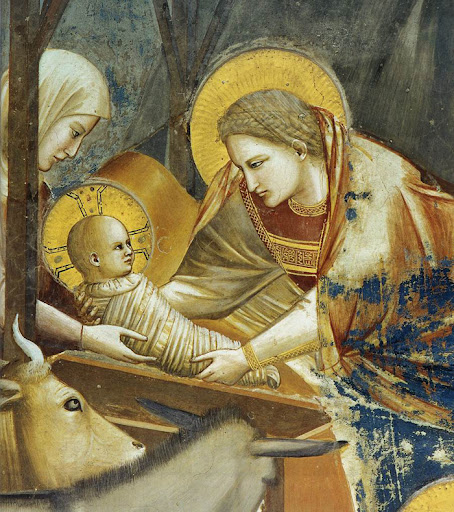The Advent Project: Week 1Näide

The Greatest Song: An Advent Meditation On Love
The Greatest Song: An Advent Meditation On Love
For this year’s Advent Project at Biola University's Center for Christianity, Culture & the Arts, we have attempted to interweave key passages from the Old Testament book the Song of Songs with familiar Christmas texts and other applicable Scriptures. During the five weeks of Advent, Christians around the world not only recall with anticipation of the first coming of our Lord but, perhaps more poignantly, anticipate his glorious return at the end of the age. The Song of Songs, as we will see as we consider it, is a beautiful meditation of God’s love for his beloved, revealed through the incarnation of Christ. The Song is the story of a profound reciprocity—God’s unconditional love for us and, in return, the offering of our love back to him. What makes the Song so appealing is the exclusive, personal nature of the relationship described—one of mutual, shared yearning. Rabbi Maimonides (1138–1204), a prolific Torah scholar, commented on this when he wrote, “What is the proper form of love for God? It is that [one] should love Adonai with a great, overpowering, fierce love as if [one] were love-sick (Song of Songs 2:5)...for the whole of the Song is a parable on this theme.”
Many academics today see the Song of Songs as no more than a series of romantic poems extolling the courtship and wedding of two lovers, and their marriage's consummation. Yet, through the nineteenth century, Jewish and Christian scholars assumed an allegorical approach to the text. Rabbis of old viewed the Song as a picture of Yahweh and his chosen people, Israel. Christian theologians understood it as a depiction of Christ and his love for the church. In the Middle Ages, scholars believed that a number of the poems referred to Christ and the Virgin Mary. Some contemporary theologians (from all sectors of the Christian church) embrace a multilayered reading of the Song. They insist the Song can be interpreted literally, as a vibrant celebration of conjugal intimacy, while at the same time, it can be understood as an allegory, viewing the partners as representative of Christ and his bride or Christ and the human soul.
The Song is a multi-sensory, nonlinear book of poetry filled with metaphors aplenty—metaphors like wine, spices, gardens, fountains, and fruit. These figures of speech heighten our senses as the reader imagines wonderful smells and tastes in an intimate Edenlike environment where the tender young lovers seem untouched by the shame and degradation of the fall. Chinese evangelist Watchman Nee states in his commentary on the Song, “[The book] tells of the longings of a believer for deeper experiences of the Lord. It does not speak of faith but of love.” The purpose of the Song of Solomon, Nee suggests, is to “lead us therefore, to know Him as the reigning King and to be by His side as the object of His supreme affection.”
All of us have carried the heavy burden of heartache with us at some point in our lives. At this blessed season of the year, there are individuals who find it difficult to navigate the holidays. Some have been deeply hurt by those they once trusted; others are struggling with loneliness, betrayal, or depression. As we explore the profound mysteries of Christ’s love, may the King of All make himself known to you in fresh, new ways. The Christ of Christmas beckons with open arms, saying “Come to Me, all you who labor and are heavy laden, and I will give you rest.” (Matthew 11:28, NKJV). “Come away my beloved” (Song of Songs 8:14, NIV) is his clarion call to each of us. Francis Roberts, in her classic devotional writes, “There is the sound of the turtledove echoing throughout the land. It is the voice of the Bridegroom calling His Bride. It is the wooing of the Spirit bringing forth a people for His Name. It is the Lord of Glory, Jesus Christ Himself, drawing together those who are His. It is the call of love, and those who truly love Him will respond.” May you be caught up in the love of Christ this Advent—a love that will not fail or forsake, a love that will never let us go.

This detail of a nativity by Italian artist Giotto di Bondone (1267-1357) is from one of the frescoes from the Scrovegni Chapel in Padua. In this image, the midwife, Salome is handing the newborn Jesus to his mother. Mary who lies on her side just after giving birth and is perhaps looking into her son’s face for the first time.
About this Plan

Biola University's Center for Christianity, Culture & the Arts is pleased to share the annual Advent Project, a daily devotional series celebrating the beauty and meaning of the Advent season through art, music, poetry, prayer, Scripture, and written devotions. The project starts on the first day of Advent and continues through Epiphany. Our goal is to help individuals quiet their hearts and enter into a daily routine of worship and reflection during this meaningful but often hectic season. Our prayer is that the project will help ground you in the unsurpassable beauty, mystery, and miracle of the Word made flesh.
More
Related Plans

3-Day Bible Plan: How to Truly Love Thy Neighbor in Today’s World

This Is the Day

A Great Harvest

Freedom in Forgiveness: Discover the Healing in Letting Go by Sara Brunsvold

The Armor of God: Well Used Against Injury

ChangeMakers: Unsung Women of the Bible (Vol 2)

The Good News

Reading With the People of God #10 Kingdom

Play-by-Play: John (3/3)
